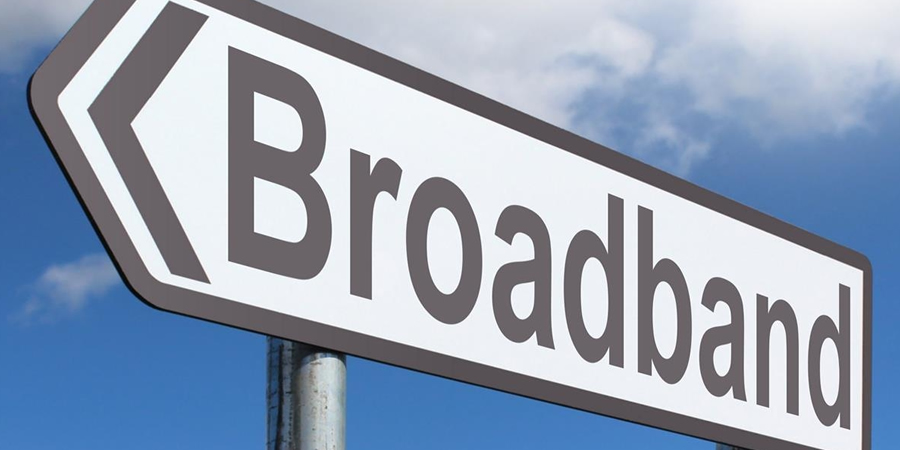The COVID-19 pandemic has emphasized how crucial it is to have stable and high-speed internet access. In the thick of social distancing, broadband connections allow people to work remotely, do e-learning, access health care services, and perform ordinary household activities such as ordering food or groceries.
Speed and stability have been increasingly important as people around the world become more reliant on the internet for everyday activities and use of bandwidth-intensive applications more often. In the United States alone, the internet traffic will be 2.1 exabytes per day in 2021. How massive is that? Take note that an exabyte is equivalent to 1 billion gigabytes. Moreover, the pandemic has resulted in an 18% growth in in-home data use, comparing between March 2019 to March 2020. Overall, the US will have 4.4 billion networked devices by year-end.
Hence, a solid broadband communication network needs to cater to the demand for real-time, high-speed, and reliable information access everywhere and all the time. In order to achieve this goal, both wireless communication and optical fiber communication play an important role. Future broadband access networks need to balance and seamlessly integrate wireless and fiber together to meet the ever-increasing communication bandwidth requirement of digital society.
Today’s broadband needs inclusion
Broadband is considered as an always-on, high-speed connection to the internet where the user does not experience issues such as slow loading or disconnection. Although there are broadband definitions from regulators, these are not quite sufficient for community resilience. These include FCC’s 25 Mbps download and 3 Mbps upload or 50/10 Mbps with the CRTC in Canada.
Many say that broadband should be approached like any other utility such as electricity or water — you consume depends on why you need it. A factory, a small office, and a typical household have different needs. To put it simply, a community can only be called dynamic and sustainable if the service needs (electricity, water, and broadband) of local businesses, institutions, and residents are addressed. Obviously, the COVID-19 pandemic has shown that the case for reliable, ubiquitous broadband is essential.
With the ongoing digital transformation across different industries, the broadband market’s potential has become more evident. In the US, internet usage went up by 18% at a national level, while tech hubs such as New York have seen an increase of 30%, with those numbers likely to grow further. In Europe, some providers observed as high as 50% of usage compared to pre-lockdowns.
As we progress further as well in the information age, there is a natural increase in data consumption. The market needs evolved from emails and image sharing to HD video streaming, video conferencing, and cloud workspaces. As a result, the infrastructure that is laid today must be able to handle the high consumer usage demands of tomorrow.
Gigabit services were then desired by a great deal. Ideally delivering download speeds of up to 1Gbps, these kinds of speeds are typically only available in locations with fiber-to-the-premises (FTTP), commonly known as ‘full fiber’ connections. For this reason, the drive for fiber-optic structures surged to support the country in general. Fiber is indeed a great ingredient in a broadband framework as it can provide both immensely fast downloads and equally fast uploads.
Technological advancements in the telecom sector alone have increased the deployment of broadband network architectures. In fact, fiber-to-the-home (FTTH) investments worth more than $60 billion is expected in the next five years, involving leading telcos AT&T, Verizon, and Quantum Fiber (formerly CenturyLink) that plan to expand their FTTH footprints.
Yet as we move towards a smarter world, every phone, smart sensor, and mobile device could be directly connected to the fiber backbone. Causing limited mobility, this is where 5G’s wireless network technology becomes beneficial. Utilizing the best of both worlds, a wireless network is a great backup solution in case your fiber optic internet goes down.
Considering that the technological aspects of fiber networks are critical and definitely not a short-term investment, having 5G is needed in the long run to provide the speed and reliability of fiber, with the mobility of wireless. For those in an urban area, where fiber optic cables most likely exist already, adding wireless access networks can amplify the fastest internet speeds on the location.
Pairing fiber and 5G together
Fiber is clearly the answer for the increasing broadband demands of today and the coming future. Nevertheless, wireless technologies should be used as complementary.
Together, 5G wireless networks and fiber-optic networks offer a more cohesive internet experience across fixed and mobile applications that either couldn’t achieve alone. Without 5G, fiber would lack mobility in the same analogy that without fiber, the 5G promises wouldn’t be delivered.
Bear in mind that 5G wireless small cells and their fiber wireline networks will never be mutually exclusive. Let’s think of a city’s network in a biological manner. According to a Deloitte study, internet traffic runs like the human bloodstream. As a whole, the minority (~10%) of traffic is carried by wireless networks while the majority (~90%) is carried by wireline networks. Thus, 5G functions as capillaries (mobile fronthaul) but internet traffic travel mostly through the veins (fiber backhaul).
Therefore, in a 5G-powered world, wireless access points can majorly improve customer experience. But the quality and reliability of the wireless network will still depend on the fiber network responsible for carrying traffic to and from the 5G small cells.
Undoubtedly, when properly designed and positioned, fixed wireless solutions offer extensive benefits that would benefit society at large. These include performance consistency and dependability, high bandwidth, lower latency, faster time-to-market, and lower cost of deployment and maintenance over time.
Additionally, there has been an exploration of fiber-wireless integration (FWI) for future broadband. As proposed, FWI offers ultra-wideband (UWB) wireless delivery with low interference that would be advantageous for future mobile communication wireless access, military application, disaster emergency response, and broadband at home, among others.










